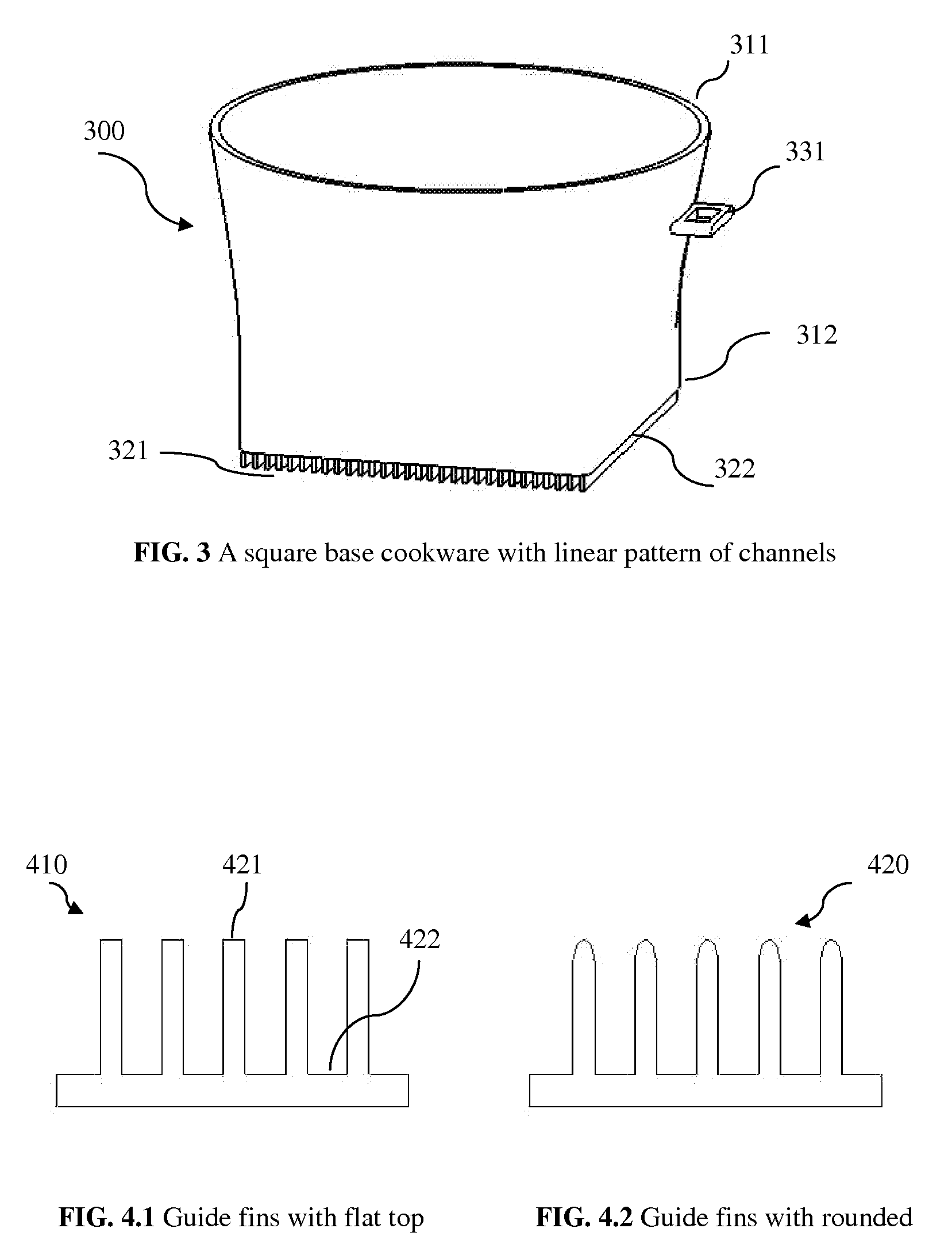Energy Efficient Cookware
a technology of energy-efficient cookware and cookware, which is applied in the field of cookingware, can solve the problems of unnecessarily high energy bill, waste of energy during the cooking process, and high energy consumption of people, and achieve the effects of reducing mixing, increasing heat transfer, and promoting conduction of flame hea
- Summary
- Abstract
- Description
- Claims
- Application Information
AI Technical Summary
Benefits of technology
Problems solved by technology
Method used
Image
Examples
Embodiment Construction
[0024]Although the following detailed description contains many specifics for the purposes of illustration, anyone of ordinary skill in the art will readily appreciate that many variations and alterations to the following exemplary details are within the scope of the invention. Accordingly, the following preferred embodiment of the invention is set forth without any loss of generality to, and without imposing limitations upon, the claimed invention.
[0025]Typically cooking setup using combustion range is that a cookware holding a medium such as water is placed on top of a flame from a burner; The flame rises up due to pressure of the gas in the supply piping and the buoyancy of the hot air causes it to touch the base of the cookware; Heat transfer from the flame to the base occurs via convection transfer as well as radiation; The heat absorbed from the heat-receiving surface is transferred to the food surface by thermal conduction; The heat is then transfer from the food surface to t...
PUM
 Login to View More
Login to View More Abstract
Description
Claims
Application Information
 Login to View More
Login to View More - R&D
- Intellectual Property
- Life Sciences
- Materials
- Tech Scout
- Unparalleled Data Quality
- Higher Quality Content
- 60% Fewer Hallucinations
Browse by: Latest US Patents, China's latest patents, Technical Efficacy Thesaurus, Application Domain, Technology Topic, Popular Technical Reports.
© 2025 PatSnap. All rights reserved.Legal|Privacy policy|Modern Slavery Act Transparency Statement|Sitemap|About US| Contact US: help@patsnap.com



